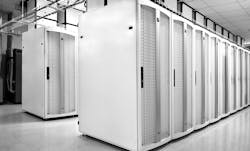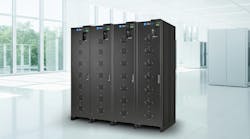The Cabinet is Critical to Managing Edge Compute Sites for IoT
In this week’s Voices of the Industry, Ashish Moondra, Senior Product Manager, Power, Electronics & Software, at Chatsworth Products explains white space management of Edge compute sites through a cabinet ecosystem.
The Internet of Things (IoT) is progressively being adopted and is expected to be one of the biggest waves in the world of computing over the next few decades. A primary enabling technology for IoT is Edge computing, which pushes applications, data and computing services away from centralized data centers to the logical extremes of the network for better latency and faster processing.
Ashish Moondra, Senior Product Manager, Power, Electronics & Software, Chatsworth Products
Three key elements of remote management at the cabinet level include: power management, environmental management and physical access control. Traditionally, power and environmental management have always been important to ensure high availability of the applications, as well as to minimize the operational costs associated with the data center white space. Higher incidences of data theft across the globe, in addition to stringent regulatory requirements across many verticals, require electronic access control with logging and auditing capabilities.
Intelligent rack power distribution unit (PDU) solutions that provide power management and control at the cabinet level are available today, but they still represent only about 37 percent of the overall global market based on unit volume shipments. In fact, it is not uncommon to go into data centers, and see an investment already made into intelligent PDUs, but they’re not being fully utilized due to the deployment effort required. Environmental monitoring systems, as well as electronic access control systems, are also available, although their use has not been too widespread due to the significant cost and labor associated with networking, cabling and managing these elements through separate systems.
So, how do we make this simple? Data center managers need to look at the data center cabinet, not just as a point product, but as a foundation of a complete ecosystem.
Data center managers need to look at the data center cabinet, not just as a point product, but as a foundation of a complete ecosystem.
Considerations for a Successful Cabinet Ecosystem
First, a valuable cabinet should be capable of housing remotely manageable hardware that integrates power, environmental information and electronic access control into one consolidated interface.
[clickToTweet tweet=”A valuable cabinet should be capable of housing remotely manageable hardware. ” quote=”A valuable cabinet should be capable of housing remotely manageable hardware. “]
Second, ability to have all of the hardware preinstalled within the cabinet prior to shipment saves significant deployment time, as well as eliminates the need to deal with all the packaging.
Third, overall networking costs associated with hardware within each cabinet can be dramatically reduced if all of the hardware within a row can be arrayed together to minimize the total number of IP addresses.
Finally, in order to simplify management of all cabinets at a single site or multiple edge sites, it is important to consider an easy-to-use, centralized data center infrastructure management (DCIM) solution that can autodiscover all integrated manageable hardware within the cabinets. The software solution should be able to map out all cabinets and in a snapshot, provide health status information covering power and environmental parameters, as well as the status of the electronic locks and the cabinet door. It should also provide a time-stamped filterable event and data log for audit and troubleshooting purposes, as well as be used to make bulk configuration changes, and push firmware upgrades to all integrated devices across sites.
A complete cabinet ecosystem approach that incorporates an integrated hardware solution, all networked through very few IP addresses and managed centrally through a plug–and-play software … how much easier can remote management get?
Ashish Moondra is a Senior Product Manager, Power, Electronics & Software, at Chatsworth Products. Chatsworth Products (CPI) addresses today’s critical technology equipment needs with products and services that protect your ever-growing investment in information and communication technology. CPI acts as your business partner and are uniquely prepared to respond to your specific requirements with global availability and rapid product customization that will give you a competitive advantage.


